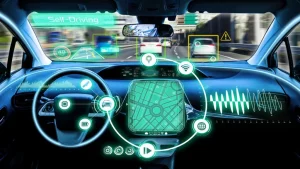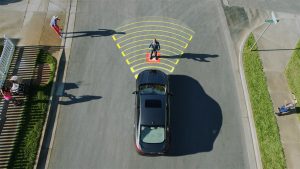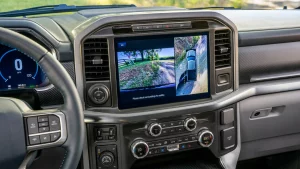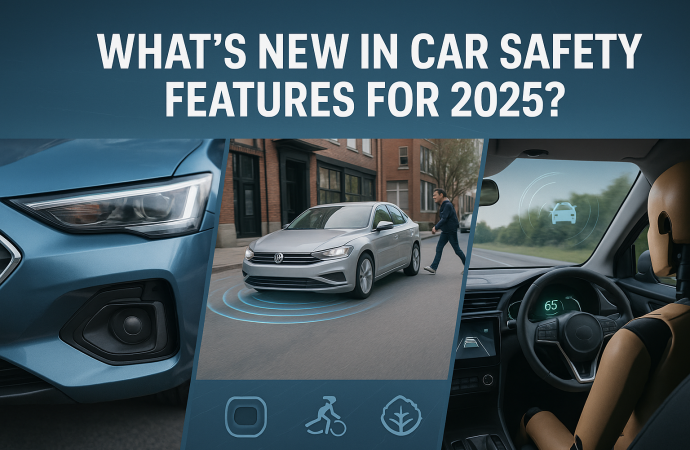Introduction Car safety technology is evolving rapidly, with every year bringing new innovations designed to protect drivers, passengers, and pedestrians. As we approach 2025, the automotive industry is introducing more advanced safety features that go beyond the traditional airbags and seatbelts. These new systems are smarter, more intuitive, and even proactive, helping prevent accidents before
Introduction
Car safety technology is evolving rapidly, with every year bringing new innovations designed to protect drivers, passengers, and pedestrians. As we approach 2025, the automotive industry is introducing more advanced safety features that go beyond the traditional airbags and seatbelts. These new systems are smarter, more intuitive, and even proactive, helping prevent accidents before they happen. From advanced driver assistance systems (ADAS) to automated emergency braking and beyond, the cars of 2025 will be packed with cutting-edge technology that enhances overall road safety. In this article, we’ll explore the latest developments in car safety features for 2025 and what you can expect when it comes to your next vehicle purchase.
What is New in Car Safety Features for 2025?
As we move toward 2025, the automotive industry is focused on creating cars that are not only safer but also smarter. Many of the new safety features being introduced are powered by artificial intelligence (AI) and machine learning, enabling cars to understand and respond to their environment more effectively than ever before. Below are some of the most notable new car safety features that will be seen in vehicles in 2025.
1. Enhanced Autonomous Driving Systems

Image by: Yandex.com
One of the most exciting developments in car safety is the rise of autonomous driving. By 2025, many vehicles will feature advanced autonomous driving systems that can control the car in certain situations, reducing the need for human intervention. These systems rely on a combination of sensors, cameras, and AI to make decisions in real-time, enabling cars to navigate streets, avoid obstacles, and park themselves without human input.
While full autonomy (Level 5) is still a few years away, vehicles in 2025 will likely have Level 3 or Level 4 autonomy. This means the car can take over most driving tasks, but the driver will still need to be alert and ready to intervene if necessary. These systems dramatically reduce the risk of human error, which is responsible for the majority of accidents on the road today.
2. Advanced Driver Assistance Systems (ADAS)

Image by: Yandex.com
Driver assistance systems are becoming increasingly sophisticated, and 2025 vehicles will come equipped with more advanced versions of these technologies. ADAS already includes features like adaptive cruise control, lane-keeping assistance, and parking sensors. However, new advancements in ADAS for 2025 will include:
- Predictive Collision Avoidance: This system uses AI to anticipate potential collisions by analyzing the speed and trajectory of other vehicles, pedestrians, and obstacles. If a collision is imminent, the car can apply the brakes or steer itself to avoid the accident.
- Enhanced Lane-Change Assist: 2025 vehicles will feature lane-change assist systems that not only alert drivers when it’s safe to change lanes but also help steer the car into the lane automatically if no obstacles are detected.
- Blind Spot Detection with Alerts: New blind-spot detection systems will be able to provide visual and audible alerts when a car is in your blind spot. These systems will also intervene by steering the car back into the lane if you attempt to change lanes while another vehicle is nearby.
3. Automated Emergency Braking (AEB) with Pedestrian Detection

Image by: Yandex.com
Automated Emergency Braking (AEB) is not new, but 2025 vehicles will come equipped with improved AEB systems that include pedestrian detection. This system can now detect pedestrians, cyclists, and even animals in the vehicle’s path and apply the brakes automatically if the driver fails to respond in time. The ability to stop the car in emergency situations can prevent a wide range of accidents, from rear-end collisions to tragic pedestrian incidents.
As AEB technology improves, it will also be able to react faster and more accurately in a variety of environmental conditions, such as rain, fog, or snow. This makes it even more reliable in preventing accidents under challenging driving conditions.
4. 360-Degree Camera Systems

Image by: Yandex.com
While backup cameras have become a standard safety feature in many vehicles, 2025 cars will be equipped with 360-degree camera systems that provide a full view of the car’s surroundings. These systems use cameras placed around the vehicle to give drivers a bird’s-eye view of their surroundings, eliminating blind spots and improving visibility.
This feature is particularly useful when parking, maneuvering through tight spaces, or navigating busy city streets. Some systems will also be able to provide real-time alerts if obstacles are detected, preventing potential collisions with nearby vehicles or pedestrians.
5. Advanced Night Vision and Driver Alertness Monitoring
Driving at night can be dangerous due to limited visibility. In 2025, night vision systems powered by infrared cameras will be more advanced and widely available. These systems can detect pedestrians, animals, and other obstacles that might not be visible with regular headlights, allowing the driver to respond more quickly.
In addition to night vision, driver alertness monitoring systems will become more accurate. These systems track the driver’s behavior, such as steering patterns, eye movement, and head position, to detect signs of fatigue or distraction. If the system detects that the driver is not paying attention or is too drowsy, it will send alerts or even suggest taking a break.
6. Vehicle-to-Everything (V2X) Communication

Image by: Yandex.com
Vehicle-to-Everything (V2X) communication is a technology that allows vehicles to communicate with each other, traffic signals, and other infrastructure. In 2025, V2X will be a game-changer in car safety, providing real-time information to drivers about road conditions, accidents, traffic, and even weather changes.
For example, if a car up ahead suddenly brakes due to an obstacle, V2X will send a warning to nearby vehicles, allowing drivers to react faster and prevent accidents. Similarly, V2X will help cars interact with traffic signals to optimize traffic flow, reducing the likelihood of collisions at intersections.
7. Smart Seatbelts and Airbags

Image by: Yandex.com
New smart seatbelt and airbag technologies will make car safety even more advanced in 2025. Smart seatbelts are designed to adjust their tightness and tension based on the severity of a collision. In the event of an accident, the seatbelt will tighten automatically to provide the maximum amount of protection, while also adapting to the position and size of the occupant.
Similarly, smart airbags will be able to detect the severity of a crash and deploy in a way that best protects the passenger. These airbags will be able to adjust their deployment speed and force depending on the size and position of the occupant, providing a more personalized level of protection.
Conclusion
As we move closer to 2025, the automotive industry is introducing exciting new car safety features that are set to redefine the driving experience. From autonomous driving systems and advanced driver assistance features to improved automated emergency braking and night vision technology, the future of car safety is smarter and more responsive than ever before. These innovations not only protect drivers and passengers but also reduce the risk of accidents by making vehicles more intuitive and aware of their surroundings. As these technologies continue to evolve, we can expect even more advancements in the years ahead, creating safer roads for everyone.
Call-to-Action (CTA):
Stay ahead of the curve by learning more about the latest car safety innovations. If you’re in the market for a new car, consider the 2025 models equipped with cutting-edge safety features that will protect you and your loved ones. Visit your local dealership to see these advancements firsthand!






















